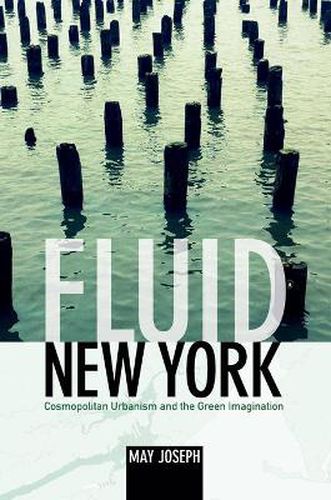Readings Newsletter
Become a Readings Member to make your shopping experience even easier.
Sign in or sign up for free!
You’re not far away from qualifying for FREE standard shipping within Australia
You’ve qualified for FREE standard shipping within Australia
The cart is loading…






Hurricane Sandy was a fierce demonstration of the ecological vulnerability of New York, a city of islands. Yet the storm also revealed the resilience of a metropolis that has started during the past decade to reckon with its aqueous topography. In Fluid New York, May Joseph describes the many ways that New York, and New Yorkers, have begun to incorporate the city’s archipelago ecology into plans for a livable and sustainable future. For instance, by cleaning its tidal marshes, the municipality has turned a previously dilapidated waterfront into a space for public leisure and rejuvenation. Joseph considers New York’s relation to the water that surrounds and defines it. Her reflections reach back to the city’s heyday as a world-class port-a past embodied in a Dutch East India Company cannon recently unearthed from the rubble at the World Trade Center site-and they encompass the devastation caused by Hurricane Sandy in 2012. They suggest that New York’s future lies in the reclamation of its great water resources-for artistic creativity, civic engagement, and ecological sustainability.
$9.00 standard shipping within Australia
FREE standard shipping within Australia for orders over $100.00
Express & International shipping calculated at checkout
Hurricane Sandy was a fierce demonstration of the ecological vulnerability of New York, a city of islands. Yet the storm also revealed the resilience of a metropolis that has started during the past decade to reckon with its aqueous topography. In Fluid New York, May Joseph describes the many ways that New York, and New Yorkers, have begun to incorporate the city’s archipelago ecology into plans for a livable and sustainable future. For instance, by cleaning its tidal marshes, the municipality has turned a previously dilapidated waterfront into a space for public leisure and rejuvenation. Joseph considers New York’s relation to the water that surrounds and defines it. Her reflections reach back to the city’s heyday as a world-class port-a past embodied in a Dutch East India Company cannon recently unearthed from the rubble at the World Trade Center site-and they encompass the devastation caused by Hurricane Sandy in 2012. They suggest that New York’s future lies in the reclamation of its great water resources-for artistic creativity, civic engagement, and ecological sustainability.